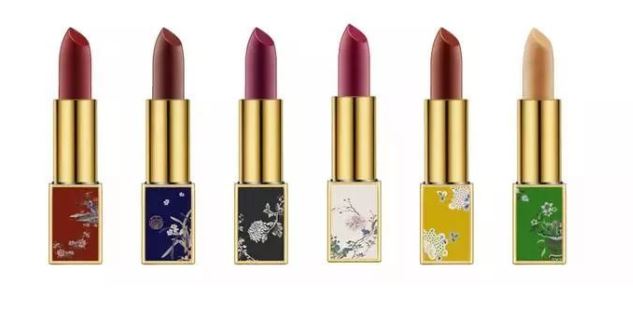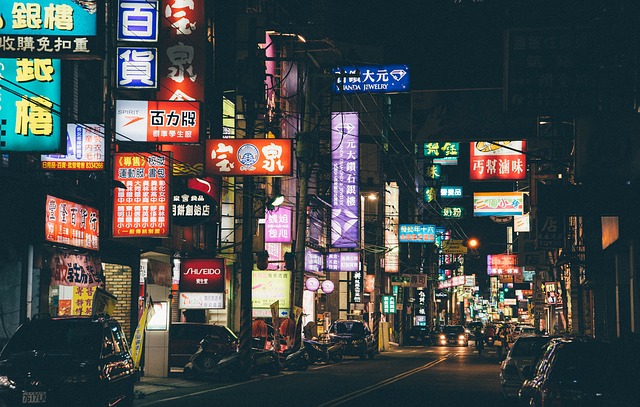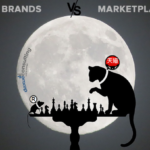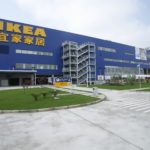Achieving harmony entering the Chinese market: Localization vs. Maintaining product and brand consistency | Daxue Consulting
“Entering China is to start again” Matthieu David, CEO and Founder
Localize too much, and you may lose your brand’s authenticity. Fail to localize enough, and the product may not be to Chinese tastes. Foreign companies walk a fine line between localizing and keeping their international image. Though this is the case in all industries, the line falls in a different place with each sector, brand, and product. So how does a foreign brand work out to what extent they need to localize? By analyzing China market entry cases, we can shed light on how brands find the balance between localization and honoring their existing brand image.
Never stop learning about Chinese consumers and the Chinese market in order to achieve the right China market strategy
Dunkin Donuts re-entered China
In 1994, Dunkin Donuts promoted their store by handing out their donuts to locals in Beijing. But the sugary American snack was not palatable for average Chinese citizens and Dunkin pulled out of China in the late 1990s. Learning from their mistake of failing to localize the recipe, Dunkin first conducted thorough taste tests, and the second China entry attempt went a bit better. Using less sugary, localized recipes like mochi rings and melon flavors, Dunkin Donuts re-entered China in 2008. It still suffered, however, from low brand awareness, inconvenient shop locations, and a theme that was simply not fun enough for Chinese consumers. It was a case of third time lucky. Dunkin re-vamped its approach in 2015 and changed the focus to creating a café feel rather than a donut shop feel, as decided by international vice president George McAllen.
Entering the Chinese market without gaining traction is of no use. The goal is to have sustainable success and build consistent demand. To do that requires continuous research or sales could move to another player that better understands Chinese consumers.
Decathlon in China: Does Decathlon understand Chinese consumers?
Let’s take the example of Decathlon’s tent sales in China. Decathlon in China has had remarkable success with tents, but it wasn’t until investigating why tents were selling so well that they realized the need to modify their products or risk losing market share. Chinese consumers were not buying tents for camping overnight, but rather using them for sun protection during a day at the park. The best-selling tent for Decathlon in the UK is a sturdy, waterproof, two-person tent meant for overnight camping. Yet on Tmall, the best-selling Decathlon tent is a product not even available the UK site, a family tent with only light rain protection, but UPF 50 sun protection. It is “recommended for sun protection and short rests while in parks and suburbs” and is even “not recommended for overnight use.” Had Decathlon offered the same tents in China as it does in the West, it would have missed the huge market of families wanting a tent for a casual day in the park.

IKEA and Muji in China: the brands embraced the Chinese culture
When IKEA was faced with consumers sleeping on their display beds and hanging out for long periods in its stores, they first tried to fight it by having employees routinely make the rounds waking people up. In the end, IKEA embraced the Chinese culture and set up pop-up displays in places like airports knowing that Chinese customers would enjoy a place to relax. IKEA in China has high foot traffic but low turnover, and the brand optimistically says, “today’s visitors could be tomorrow’s customers.” The attitude of Chinese people towards shopping is fundamentally different from that in the West – they enjoy it as a form of leisure and entertainment and therefore want to interact closely with their shopping surroundings. Muji in China has followed in IKEA’s steps, setting up pop-up displays, and other furniture brands displays are appearing in malls.


Whether in terms of taste adaptation, product adaption, or product promotion ideas, having a dedicated development process for products aimed at the China market is a key aspect of successfully entering the Chinese market. The idea is not to turn your back on your identity or brand culture, but rather break down the elements that make your product popular in the Chinese market, and study what to leave untouched and what to adapt to Chinese culture.
Branding: know when and how to rebrand in China
When you read words like “baby formula, cosmetics, fast food, coffee, and airlines,” brand images will come to your mind. Brands influence people on a deep psycho-emotional level and building your brand image in a new market is a balancing act between your brand identity with all its history and localization of the brand’s image. Entering the Chinese market requires a presentation of your authentic brand while at the same time taking into account the peculiarities of the Chinese market.
As Qin Guo, managing partner of the branding agency BSUR, put it: “Brand is what comes to people’s mind when they think of your company, making you unique and different, and allows customers to make an emotional connection with your products. Without a brand, differentiation is left up to price; putting you in a race to the bottom.” An aspirational brand image can warrant premium pricing. Starbucks is a good example with prices for its coffee in China around 20% higher than in the US.
China market strategy: Deciding between local or international identity
Reinvent your brand, or not?
When deciding between local or international identity in the Chinese market, the golden middle is always the best choice. The process of working out the details, of finding and maintaining a balance between these two elements requires drawing on rich experience, deep market knowledge, and professional intuition. There is no universal recipe suitable for every brand. In the pursuit of brand localization in China, brands must be careful not to lose individuality, charm, and recognition otherwise, nothing will remain of the brand identity. After all, based on research by Daxue Consulting across many B2C product categories, Chinese consumers highly evaluate brand history and international success.
For instance, in the wine industry, there is a correlation between the longevity of a brand and the perceived quality. The emphasis on status has affected red wine sales in China. Bordeaux quickly became the most popular region for wines sold in China because of its rich history dating back to its formal classification as a category in 1855. According to Euromonitor International, the biggest-selling red wines in China in 2015 by volume were Merlot and Cabernet Sauvignon, which are the two most prominent grapes varieties from Bordeaux. Many wine brands have found success in China by promoting their classic and distinguished identity. Clarets, for example, have a unique history and recognized quality, a point promoted effectively to Chinese consumers.
In the baked goods industry, there is a correlation between a brand’s international success and the perceived nutritional value and quality. A growing niche of Chinese consumers goes to popular Western franchises such as Costa Coffee or Starbucks to buy baked products that taste the same as those in Europe or North America. They are looking for “real” European bread with nuts and a crispy crust rather than something adapted to Chinese preferences, which tend to be softer, more sugary bread. These customers “have strong brand perception and high awareness of authenticity. They want to buy French quality at a controlled price,” says François-Xavier Colas of the French group Le Duff, who owns the bakery “La Brioche Dorée” in China. The strategy of these Western bakeries is to keep the original taste of wheat and grains and to offer authentic products like pretzels, baguettes, and kornspitz. For example, Baker & Spice (from the UK) is a French-style bakery offering wheat and multigrain bread, decorated cakes, and delicate desserts.
On the other side of the spectrum from bakeries and wines that do not adapt their product, are brands that work hard to echo Chinese culture. To demonstrate how to successfully embrace Chinese culture in products and promotions, we can deep dive into the lipstick segment.
Maybelline brand localization in China
To launch its “Red on Fire” lipstick series, Maybelline created a mahjong-themed lipstick set, with traditional Mahjong symbols on the tiles replaced with lipstick and the Maybelline M logo on the back. Maybelline China’s “Red On Fire” collection is said to have sold out in Mainland China within days of its launch.

China market entry: International brands can still learn much from the success of local leaders
International brands can still learn much from the success of local leaders. The Forbidden City is the beating heart of Beijing, the former imperial palace from the Ming to the end of the Qing dynasty and it now houses the Palace Museum. The Forbidden City has launched a number of branded goods and each of them has become a hit on social media, marking a return in the appeal of traditional Chinese culture in high-end products. The last hit was a line of lipstick, which was embraced by Chinese women to the extent that it went viral on social media. The set was targeted at middle and high-end consumers and the cost or each lipstick was set at around 200 RMB (approximately US$30.00); 50,000 lipsticks and other makeup products were sold during the first ten hours after the collection’s launch, with total sales reaching over 5 million RMB.

M.A.C. embracing modern Chinese culture
Both these cases highlight the use of traditional Chinese culture, but the cosmetics brand M.A.C, on the other hand, has recently dazzled fans by instead embracing modern Chinese culture. After listening in on the social media comments of its target market of young women, M.A.C discovered that people were trying to match lipstick shades with the characters from the popular mobile game, Honor of Kings. M.A.C recognized this as an opportunity, and partnered with the game to promote the exact lipstick shades for five characters, and created product packaging that aligned with the theme of the game. The result was that searches for M.A.C spiked on Baidu, the promotion exploded on Weibo, and all five lipstick shades were sold out within 24 hours of the launch.
Brand naming process in China: 80% research 20% creativity
A brand name is central to a brand’s image. The challenge is to present a brand competently and professionally in China, taking into account the local cultural, historical and linguistic landscape. All international companies face the challenge of China brand naming, regardless of industry or scale.
Based on Daxue Consulting’s experience with brand naming, the brand naming process can be broken down into four stages, namely: Preparation, Name Development, Testing, and Finalization.
Preparation begins with initial research to gain a comprehensive understanding of competitors in China to understand the playing field. Next, we understand a client’s brand positioning and identity, with the goal of discovering the central theme that resonates throughout the brand. Researching the landscape and the brand perception in China sets the foundation for the naming research. From there, we begin name development. Through brainstorming, we generate as many keywords as possible that relate to the brand, then the keywords are arranged into possible names. We do a legal check on these names, including trademark and domain checks for mainland China and Hong Kong.
The name options that clear the legal check continue onto name testing, which is conducted through focus groups with consumers and a mini-survey of 50 market insiders in the target sector.
Five to ten names top names then go through a linguistic check in Mandarin, Cantonese, Shanghainese etc.
The brand naming process generates three to five high potential names from which a brand can choose. Without the help of local experts, creating a brand name in the Chinese market that both appeal to consumers and resonates with your brand image is nearly impossible. Especially for a foreign brand, every step in the naming process requires research, which is why a solid naming procedure is 80% research and 20% creativity.
In conclusion, these successful China market strategy cases vary on the extent to which brands localized to the culture, yet in each case, the product and name adaptations were rooted in research. Each industry and even brand within an industry needs its own unique formula for mixing its own characteristics and history with Chinese elements, proving that there is no single path to success in China.
Authors: Allison Malmsten and Sofya Bakhta
Make the new economic China Paradigm positive leverage for your business
Do not hesitate to reach out to our project managers at dx@daxueconsulting.com to get all answers to your questions















